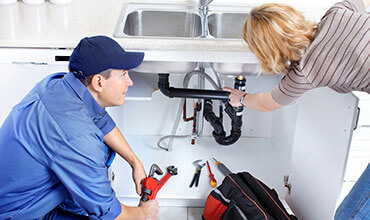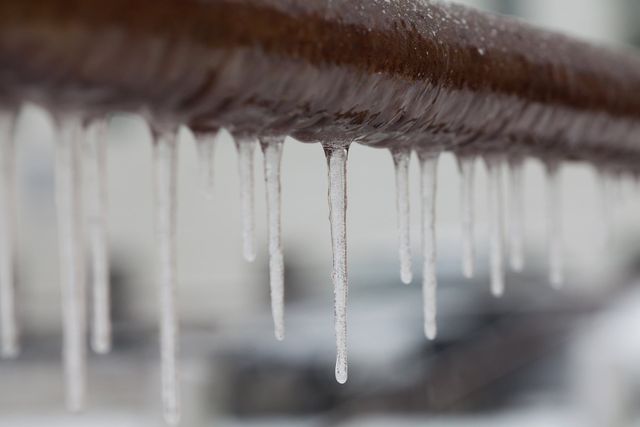Important Winterizing Strategies: Five Ways to Keep Pipes from Bursting
Important Winterizing Strategies: Five Ways to Keep Pipes from Bursting
Blog Article
Just about every person maintains their personal idea in relation to How to Prevent Frozen Pipes.

All house owners who live in warm environments have to do their ideal to winterize their pipes. Failure to do so can spell catastrophe like icy, cracked, or ruptured pipelines.
Try a Hair Dryer or Heat Gun
When your pipes are virtually freezing, your dependable hair clothes dryer or warm weapon is a blessing. If the warm towels do not help remove any kind of working out ice in your pipes, bowling hot air straight right into them may help. You may end up damaging your pipes while trying to thaw the ice.
Open Up Closet Doors Hiding Plumbing
When it's cool outside, it would certainly be useful to open cabinet doors that are camouflaging your pipes. As an example, they could be someplace in your cooking area or shower room. This will allow the cozy air from your heating system to distribute there. Therefore, you protect against these exposed pipelines from cold. Doing this small trick can maintain your pipes cozy and restrict the potentially hazardous outcomes of freezing temperature levels.
Require Time to Cover Exposed Piping
One cool and also simple hack to heat up frigid pipes is to wrap them with cozy towels. You can cover them initially with towels. After safeguarding them in position, you can pour boiling water on the towels. Do it gradually to allow the towels soak up the liquid. You can additionally make use of pre-soaked towels in hot water, simply do not neglect to use safety handwear covers to safeguard your hands from the warmth.
Turn On the Faucets
When the temperature level decreases and it appears as if the freezing temperature level will last, it will certainly assist to turn on your water both inside and also outdoors. This will maintain the water streaming via your plumbing systems. Additionally, the activity will reduce the cold process. Especially, there's no need to turn it on full force. You'll end up throwing away gallons of water this way. Instead, go for regarding 5 declines per minute.
Shut Off Water When Pipes are Frozen
Switch off the main water valve quickly if you see that your pipelines are entirely icy or almost nearing that phase. You will typically locate this in your basement or laundry room near the heating unit or the front wall surface closest to the street. Turn it off today to prevent more damage.
Don't neglect to close exterior water resources, as well, such as your hookup for the garden house. Doing this will certainly protect against added water from filling your plumbing system. Unfortunately, with more water, even more ice will pile up, which will at some point lead to rupture pipelines. It is best to call an expert plumber for an assessment if you are unclear regarding the state of your pipelines this wintertime. Taking this proactive strategy can conserve you hundreds of bucks out of commission.
All home owners that live in temperate environments have to do their best to winterize their pipes. Failing to do so can mean calamity like frozen, fractured, or ruptured pipes. If the warm towels do not help dislodge any kind of resolving ice in your pipes, bowling warm air straight into them may aid. Turn off the major water valve instantly if you observe that your pipelines are completely frozen or practically nearing that stage. With more water, more ice will certainly load up, which will eventually lead to burst pipelines.
2 Things To Do To Get Your Plumbing Ready For Winter
You don't want to have frozen pipes in the winter. At best, it's an annoyance. At worst, the pipes can end up bursting, and you can end up with water all over your house and thousands of dollars in repairs. The solution to that is to do what you can to winterize your plumbing so that you can avoid the dreaded frozen pipes. So, what are some things that you can do to winterize everything?
Pipe Insulation
One thing that you can do is to install insulation on any exposed pipes or any pipes that could end up accessible to the cold. For example, if you have a sink on an exterior wall, you might want to insulate the pipes under that sink since they are at greater risk of freeing. The insulation is pretty easy to get. You can get it from home improvement stores, department stores, and hardware stores. The insulation is basically a long foam tube that has a slit up one side. You can easily cut the insulation and slip it over your pipe. You can then run something like duct tape up the slit to make sure that the insulation stays on and stays closed. Make sure you know the pipe diameter so that you can get insulation that will fit it.
Drain Your Pipes
If you are going to leave your house during the winter for a long time, you want to drain your pipes. If you have drained them, there's no water to freeze when it gets cold. It's a really easy thing to do. The first thing to do is turn the water off at the meter so that no water is getting in your house. Once you have done that, you need to go to the faucet as far away from the meter as possible. If you have a faucet that is on a second level, you should use that. Turn that faucet on and let it run until no more water comes out of the tap. Then you need to go to your toilets and flush them until no more water comes through. Doing this will get rid of all the water in your plumbing.
https://stoneflyrods.com/2021/03/05/2-things-to-do-to-get-your-plumbing-ready-for-winter/

I found that blog posting on Prevent Freezing and Bursting Pipes while browsing on the web. Make sure you take a moment to distribute this entry if you liked it. We thank you for reading our article about Winterizing Your Pipes.
Source This Article Report this page